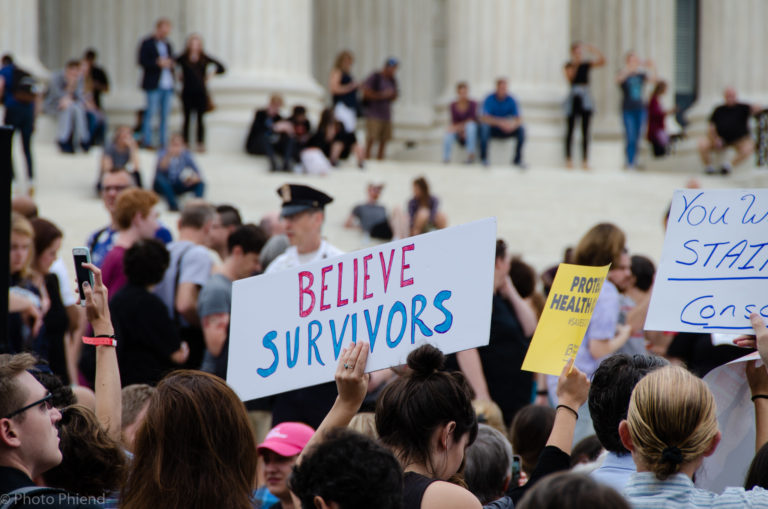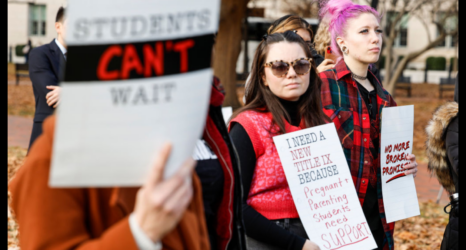The recognition and inclusion of people who experience intimate partner violence in the Build Back Better plan is a path-breaking step in supporting a population often invisible in the workplace.

In September 2020, 863,000 women left or were forced to leave the workforce. Since then, much attention has been focused on how the paid leave proposal in Biden’s Build Back Better plan—which is currently being debated in Congress—could help keep women in the workforce when they’re welcoming a new child into their family, caring for a loved one or even recovering from a serious illness like cancer.
But one truly world-leading element of the paid leave plan hasn’t gotten the notice it should, especially right now, during National Domestic Violence Awareness month: The paid leave proposal in the Build Back Better plan would specifically provide paid leave for people who need to “find safety from assault, stalking and sexual violence.”
Currently, survivors and victims of domestic violence and sexual assault in the United States have extremely limited access, if any, to paid leave. It is a patchwork of responses to those whose very lives may depend on being able to take paid leave time.
Through work in South Africa, Zambia, Iraq and Haiti, I (Liesl) saw first-hand the debilitating impact of domestic violence and sexual assault. But intimate partner violence is also widespread in the U.S.: The CDC estimates that one in four women will experience physical and sexual violence and/or stalking by an intimate partner during their lifetime. COVID-19 shone a bright light on the extent of domestic violence in the U.S. An article in the New England Journal of Medicine called it “a pandemic within a pandemic.”
One of the most significant barriers to safety in intimate relationships is economic dependence on an abusive partner. Our work has shown us just how difficult it is for survivors of domestic and sexual violence to break free financially and gain economic independence.
Women who are financially dependent, including those who have lost their job because of the violence, are often unable to leave. And even when they manage to do so, they frequently return because they have no other way to provide housing, food and education for themselves and their children. Providing paid leave to women will give them the financial independence they need in order to seek support, plan a safe leaving strategy,and access related services.
While the full financial costs of domestic violence and sexual violence to victims are unknown, 2017 research revealed the lifetime costs of intimate partner violence were $103,767 per female victim. The total economic burden of this violence is an eye-watering $3.6 trillion including medical and criminal justice-related costs. Other surveys show that intimate partner violence takes a huge toll on the working lives of victims, with many reporting having to leave paid work to deal with the myriad consequences of intimate partner violence.
The lifetime costs of intimate partner violence are $103,767 per victim—and many reported having to leave paid work to deal with the myriad consequences.
The costs of intimate partner violence are not only borne by victims and society, but according to that same 2017 study, employers lose an estimated $1.3 trillion in productivity because of it.
Nationally, some survivors and victims of intimate partner violence may be able to take time off to address health concerns related to violence via the Family & Medical Leave Act (FMLA), but that leave is unpaid and completely unavailable to the 44 percent of Americans who work in positions not covered by FMLA.
As a survivor attempting to work during the time when she was trying to leave the abusive person, Ruth eventually had to take time off for safety reasons. And though she was fortunate to have some personal leave left, it eventually ran out and left Ruth with financial and other related issues. Her employer eventually decided to make sure she stayed on and provided a means for her to continue working—by exhausting all of her other paid time off. This eliminated her freedom to take paid time off for any other reason, including medical appointments, her child’s school needs and other necessities.

A few states do address the consequences of intimate partner violence as they pertain to the working lives of survivors. For example, in 2019, New York amended its Human Rights Law to include victims of domestic violence, but even in a progressive bastion like the Empire State, access to leave comes at survivors’ expense: time off can be charged against any available paid time off or taken as unpaid leave if no paid time off is available. The overwhelming majority of states however offer no support to victims. The simple fact is, even when they’re blazing new trails, the leave granted to survivors of domestic violence by states is a patchwork and incomplete solution that largely fails to meet the needs of victims of violence.
Even when states are blazing new trails, the leave granted to survivors of domestic violence is a patchwork and incomplete solution that largely fails to meet the needs of victims of violence.
Internationally, few countries have explicitly recognized the needs of victims of domestic violence in the workplace. In 2019, New Zealand introduced a law that provided 10 days of paid leave for domestic violence survivors to allow them to protect themselves and their families but not many countries have followed suit.
The recognition and inclusion of people who experience intimate partner violence in the Build Back Better plan’s proposal for federal paid family and medical leave is a path-breaking step in supporting a population who is often invisible in the workplace.
There are many details that must still be worked out to make these provisions a reality. President Biden, as he has done in the past, should seek the advice, guidance and expertise of survivors themselves about how to implement this program effectively. Nevertheless, this plan, when finally passed, will make it clear that our country is serious in our commitment to building an inclusive plan for paid leave that benefits everyone, especially those who need it the most.
Up next:





